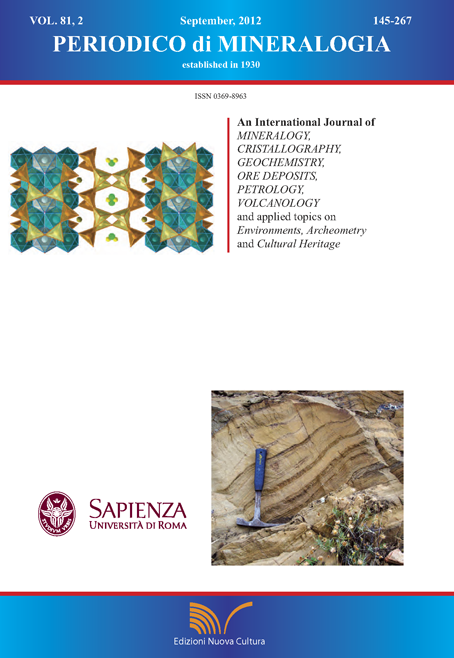Are bacteria capable of precipitating magnesite?
DOI:
https://doi.org/10.2451/2012PM0013Keywords:
magnesite, microorganisms, laboratory experiments, sulphate reductionAbstract
Laboratory experiments were conducted to investigate the possible (bio-) chemical pathways involved in the low-temperature nucleation of magnesite, MgCO3. Two compounds known for their power to prevent hydrolysis (amorphous silica and magnesium trisilicate) were tested in contact with a slowly desiccating solution of magnesium bicarbonate. Amorphous silica gave rise to precipitates of nesquehonite instead of the more usual magnesium hydroxide carbonate, thereby illustrating its influence on hydrolysis. Magnesium tri-silicate led to Xray amorphous precipitates. The presence of reducing compounds, in particular the strongly reducing hydrogen gas, does not lead to the low-temperature nucleation of magnesite.


